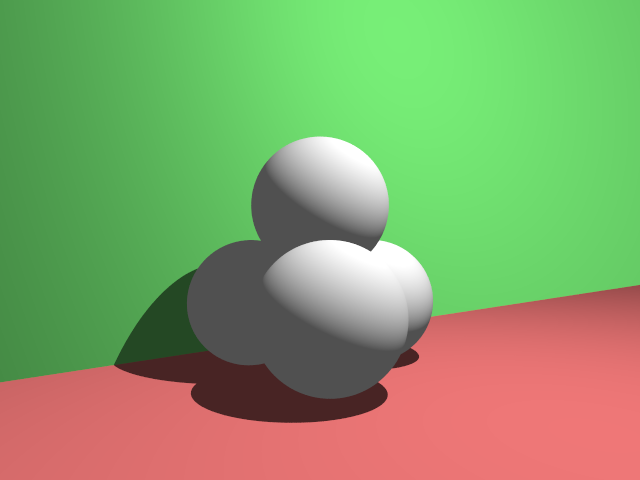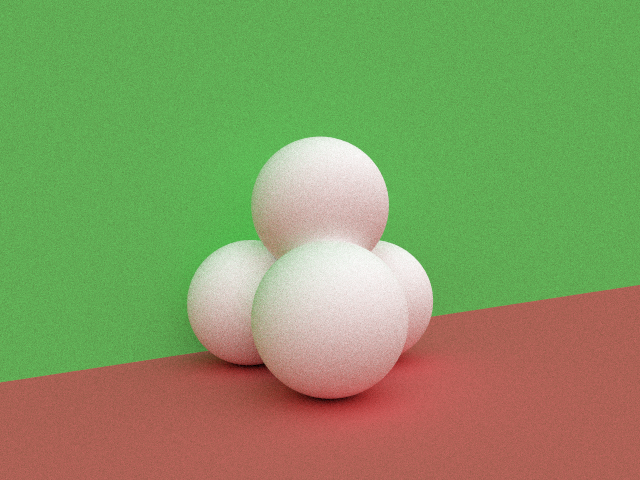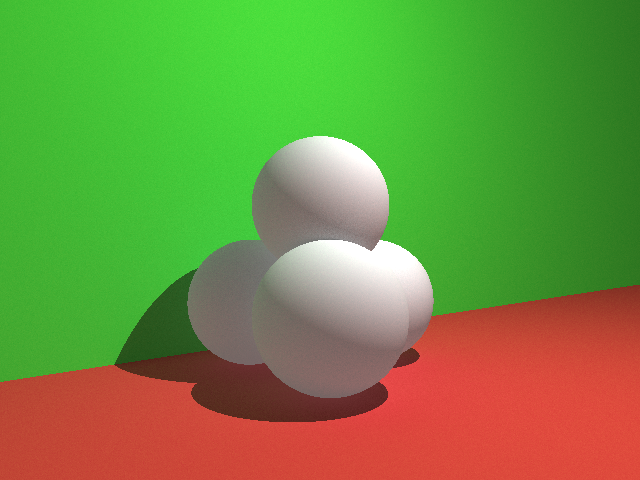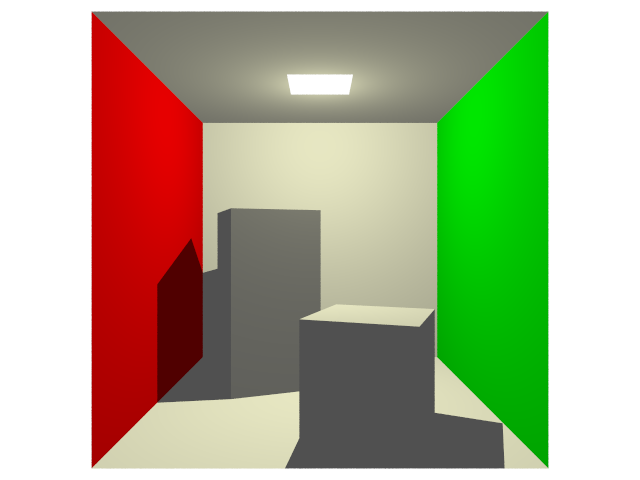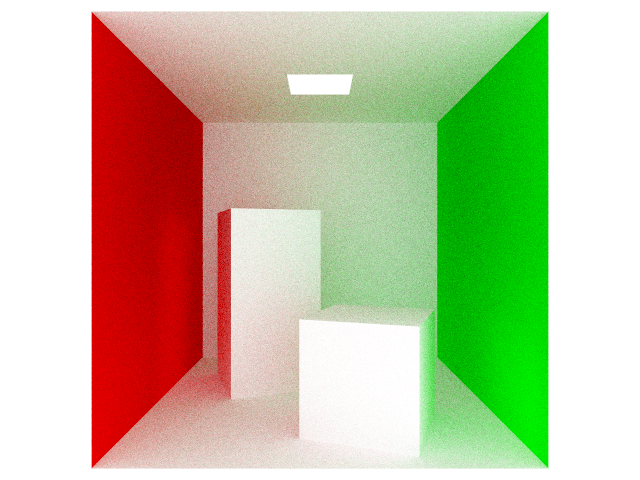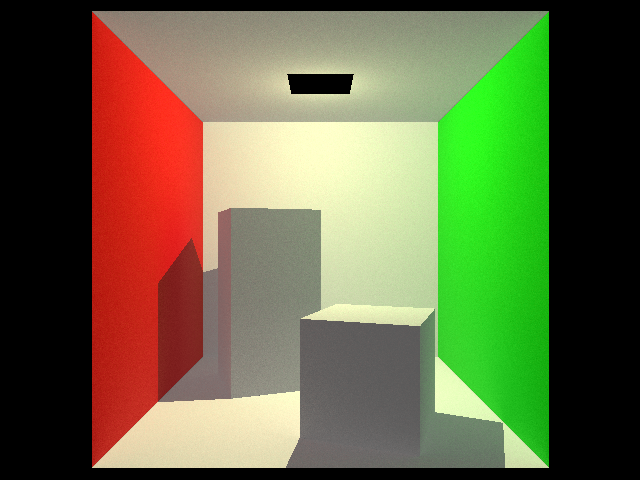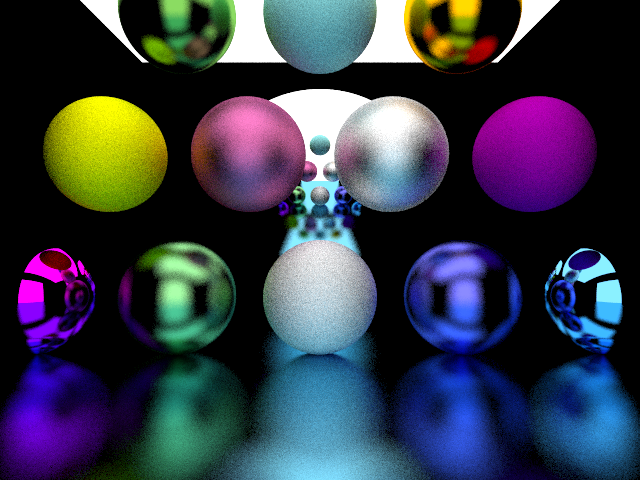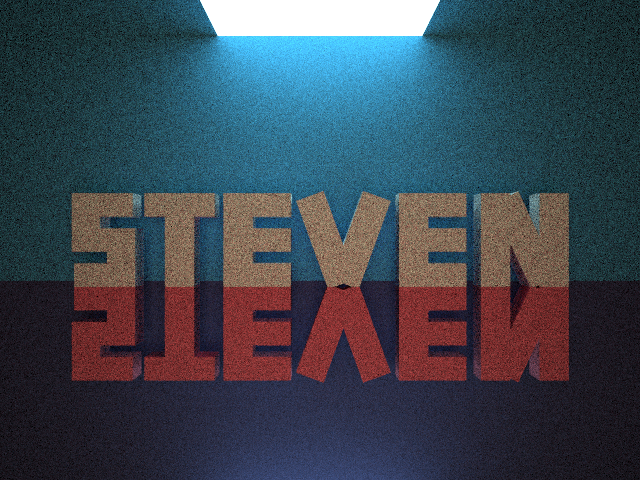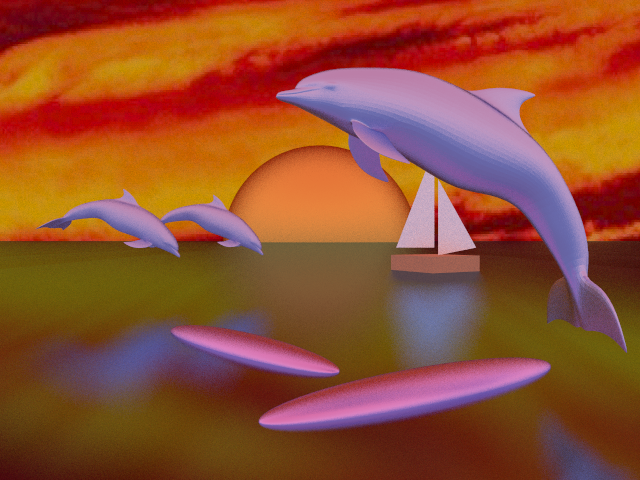Part 1: Bounding-Volume Hierarchy (BVH)
Prior to this final project, I realized that my ray tracer performed slowly when rendering obj meshes. I wanted the ability to render obj meshes more efficiently so that I could render more complex scenes. To improve performance, I implemented a BVH spatial data structure. My BVH representation is a binary tree. Each node has a bounding box that encloses all the geometry beneath it. Each node also has left and right pointers to nodes representing smaller regions of space. To construct the BVH, triangles are sorted by their center coordinates and then split into two groups (these groups are assigned to the left and right attributes of a node). The subdivision repeats until each triangle is a leaf of the tree.
Baseline Scene Timings
Scene 1: Ico Sphere (80 triangles)
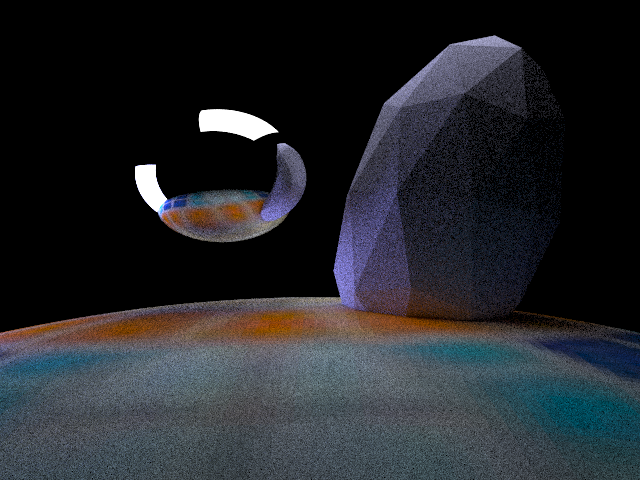
- Without BVH
- Real: 2m5.493s
- System: 2m3.207s
- With BVH:
- Real: 0m50.718s
- System: 0m48.561s
Scene 2: Bunny in an Enclosed Room (5,552 triangles)
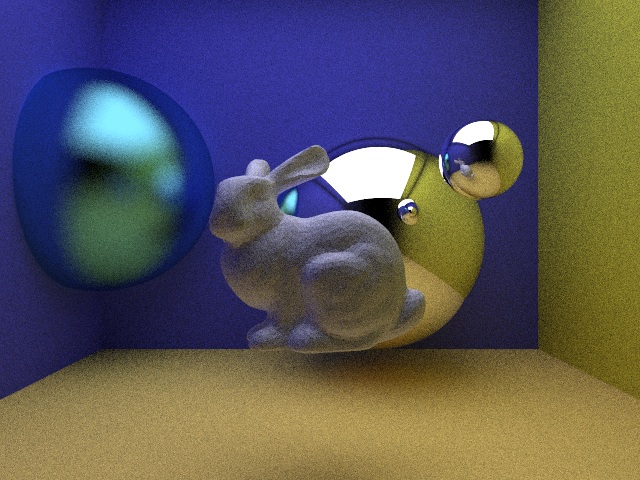
- Without BVH
- Real: 45m10.644s
- System: 44m38.172s
- With BVH:
- Real: 7m7.273s
- System: 6m54.492s
Scene 3: Trophy (59,124 triangles)

- Without BVH
- Real: 405m27.719s (~6 hours and 45 minutes)
- System: 401m58.015s (~6 hours and 42 minutes)
- With BVH:
- Real: 1m11.138s
- System: 1m9.872s
